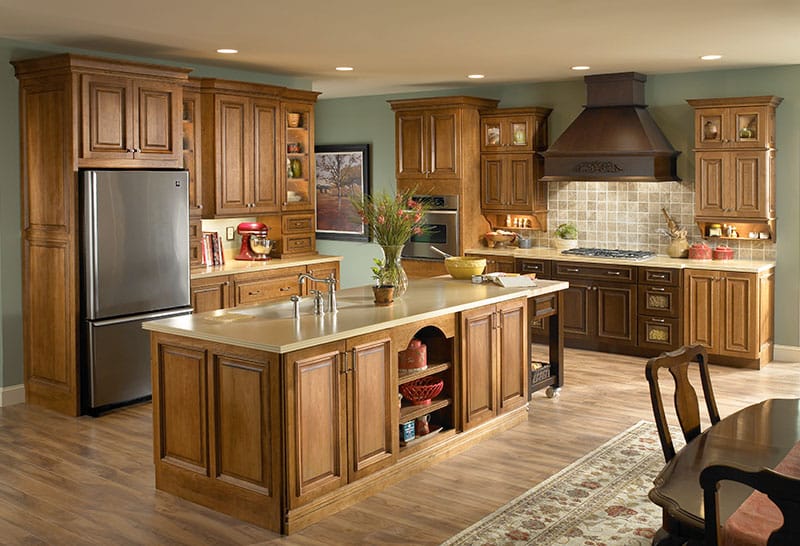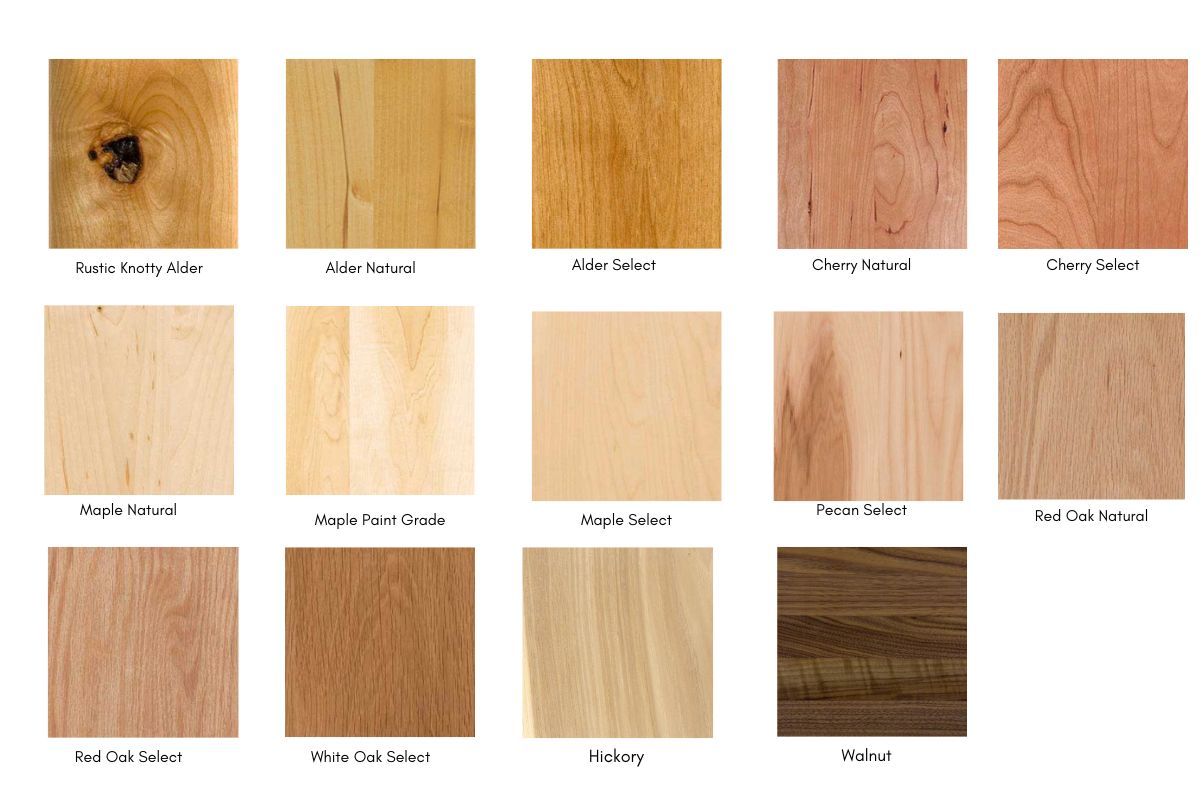Types of Non-Wood Kitchen Cabinets

Non-wood kitchen cabinets are becoming increasingly popular due to their durability, affordability, and wide range of styles. These cabinets offer a great alternative to traditional wood cabinets, providing a modern and stylish look for any kitchen.
Materials Used for Non-Wood Cabinets, Non wood kitchen cabinets
Non-wood cabinets are crafted from various materials, each with its unique advantages and disadvantages. Understanding these materials will help you choose the best option for your kitchen.
- Metal Cabinets: Metal cabinets, often made from steel or aluminum, are known for their exceptional durability and resistance to moisture and heat. They are also easy to clean and maintain. However, metal cabinets can be susceptible to dents and scratches, and their sleek, modern aesthetic might not suit all kitchen styles.
- Laminate Cabinets: Laminate cabinets are made by bonding a decorative layer of plastic to a core material, typically particleboard or MDF. They are incredibly affordable and come in a vast array of colors, patterns, and textures, offering versatility in design. However, laminate surfaces can be prone to scratches and chips, and they lack the natural beauty and warmth of wood.
- Acrylic Cabinets: Acrylic cabinets are known for their high gloss finish, offering a sleek and contemporary look. They are highly durable and resistant to stains, making them easy to clean. However, acrylic cabinets can be more expensive than other options, and they might not be as resistant to scratches as other materials.
- Thermofoil Cabinets: Thermofoil cabinets are constructed with a core material, typically MDF, that is covered with a thin layer of vinyl. This vinyl layer is heated and pressed onto the core, creating a smooth and durable surface. Thermofoil cabinets offer a wide range of colors and finishes, mimicking the look of wood. They are also relatively affordable and easy to maintain. However, thermofoil surfaces can be susceptible to scratches and dents, and they may not be as heat-resistant as other materials.
Advantages and Disadvantages of Non-Wood Cabinets: Non Wood Kitchen Cabinets

Non-wood kitchen cabinets have gained popularity in recent years due to their durability, affordability, and modern aesthetics. While they offer distinct advantages over traditional wood cabinets, it’s crucial to consider both their pros and cons before making a decision.
Advantages of Non-Wood Cabinets
Non-wood cabinets boast several advantages that make them an attractive option for modern kitchens. These advantages are especially prominent in areas where moisture, heat, and wear and tear are significant concerns.
- Moisture Resistance: Non-wood cabinets, particularly those made from materials like laminate, melamine, or thermofoil, are highly resistant to moisture. This makes them ideal for kitchens with high humidity levels, such as those near sinks or dishwashers. They are less prone to warping, swelling, or damage from water spills compared to wood cabinets.
- Scratch Resistance: The surface of non-wood cabinets is often coated with a protective layer that makes them more resistant to scratches and dents. This is particularly beneficial in high-traffic areas where accidental bumps and scrapes are common.
- Heat Resistance: Non-wood cabinets are generally more resistant to heat than wood cabinets. This is because they are less likely to warp or crack under high temperatures, making them suitable for kitchens with ovens and stoves nearby.
- Easy Maintenance: Non-wood cabinets are generally easier to clean and maintain than wood cabinets. They can be wiped down with a damp cloth, and they don’t require special cleaning products or treatments. This makes them a practical choice for busy families.
- Affordability: Non-wood cabinets are often more affordable than wood cabinets, especially in the case of laminate or melamine cabinets. This makes them a budget-friendly option for homeowners who are looking to renovate their kitchens without breaking the bank.
- Variety of Styles and Colors: Non-wood cabinets are available in a wide range of styles and colors, making it easier to find options that complement the overall design of your kitchen. This allows for more flexibility in achieving your desired aesthetic.
Disadvantages of Non-Wood Cabinets
While non-wood cabinets offer numerous benefits, they also have some drawbacks that you should consider.
- Limited Customization Options: Non-wood cabinets often have fewer customization options than wood cabinets. This means you may have limited choices in terms of door styles, hardware, and finishes. While manufacturers offer a variety of standard options, achieving a truly unique look might be more challenging.
- Potential for Fading or Discoloration: Some non-wood cabinets, especially those made from laminate or melamine, can fade or discolor over time, particularly if they are exposed to direct sunlight. This is a factor to consider if you have a kitchen with large windows or skylights.
- Less Durable than Wood: While non-wood cabinets are resistant to scratches and moisture, they may not be as durable as wood cabinets in the long run. They may be more susceptible to damage from impact or heavy use, especially if they are not properly installed or maintained.
- Limited Lifespan: Non-wood cabinets may have a shorter lifespan than wood cabinets, especially if they are exposed to extreme temperatures or humidity. This is due to the fact that the materials used to construct non-wood cabinets are not as resilient as wood. While a properly maintained non-wood cabinet can last for many years, it may eventually require replacement.
Comparison with Traditional Wood Cabinets
When deciding between non-wood and wood cabinets, it’s essential to weigh their advantages and disadvantages.
- Durability: Wood cabinets are generally considered more durable than non-wood cabinets, especially in terms of their resistance to impact and heavy use. They can be refinished or repaired to extend their lifespan, making them a long-term investment.
- Customization: Wood cabinets offer significantly more customization options than non-wood cabinets. They can be stained, painted, and shaped to fit any design aesthetic. This allows for a greater degree of personalization and uniqueness.
- Value: Wood cabinets are often seen as a higher-value investment than non-wood cabinets. They can appreciate in value over time, especially if they are made from high-quality materials. This can be a significant factor if you plan to sell your home in the future.
- Cost: Wood cabinets are generally more expensive than non-wood cabinets, particularly those made from high-quality hardwoods. This is due to the cost of materials, craftsmanship, and installation.
Choosing Non-Wood Kitchen Cabinets

Choosing non-wood kitchen cabinets is a decision that requires careful consideration. There are numerous factors to weigh, such as your budget, desired style, and the size of your kitchen. It’s essential to understand your specific needs and preferences to make an informed choice.
Factors to Consider When Selecting Non-Wood Cabinets
Choosing non-wood kitchen cabinets involves several factors that influence the final decision. These factors help you determine the best fit for your kitchen, considering your budget, desired style, and kitchen size.
- Budget: Non-wood cabinets offer a wide range of price points, from affordable options to high-end choices. Determine your budget before exploring different cabinet materials and styles. This helps you narrow down your options and stay within your financial constraints.
- Style Preferences: Non-wood cabinets come in various styles, from modern and minimalist to traditional and ornate. Consider your preferred aesthetic and how it aligns with the overall design of your kitchen. The style should complement the existing décor and create a cohesive look.
- Kitchen Size: The size of your kitchen plays a significant role in cabinet selection. Smaller kitchens may benefit from compact cabinets that maximize space and storage. Larger kitchens offer more flexibility for cabinet size and layout.
- Durability and Maintenance: Non-wood cabinets offer varying levels of durability and maintenance requirements. Some materials, like metal or laminate, are known for their resilience and ease of cleaning. Others may require more attention to prevent scratches or damage.
Sample Kitchen Layout Using Non-Wood Cabinets
Imagine a modern kitchen with a sleek and minimalist aesthetic. The layout features a combination of white high-gloss laminate cabinets and stainless steel accents. The lower cabinets provide ample storage space with drawers and doors, while the upper cabinets feature open shelving for displaying decorative items. The countertops are made of durable quartz, offering a clean and contemporary look. The backsplash is a simple white subway tile, complementing the overall design. The hardware is brushed nickel, adding a subtle touch of elegance. This combination creates a functional and visually appealing kitchen space that reflects modern design trends.
Tips for Choosing the Right Non-Wood Cabinets
- Consider the Purpose of the Cabinets: Determine the intended use of the cabinets. For example, base cabinets for storing heavy items may require stronger materials like metal or solid laminate. Upper cabinets for displaying dishes or decorative items can be lighter and more aesthetically focused.
- Think About the Finish: Non-wood cabinets come in various finishes, including gloss, matte, and textured options. Consider the overall design of your kitchen and choose a finish that complements the existing décor. Glossy finishes can create a more modern look, while matte finishes offer a more understated and timeless aesthetic.
- Choose the Right Hardware: Hardware can significantly impact the overall look and feel of your cabinets. Choose hardware that complements the style of your cabinets and the overall design of your kitchen. Consider the material, finish, and size of the hardware to create a cohesive look.
- Seek Professional Advice: Consult with a kitchen designer or cabinet specialist for expert guidance. They can help you choose the right non-wood cabinets for your specific needs and preferences. Their knowledge and experience can ensure you make informed decisions and achieve your desired kitchen design.
Non wood kitchen cabinets – While non-wood kitchen cabinets offer sleek modernity and easy maintenance, sometimes you yearn for the warmth and character of natural wood. A rustic wood file cabinet, like the ones you can find here , can bring that same rustic charm to your home office.
Perhaps, in the spirit of blending styles, you could incorporate a touch of that natural wood essence into your non-wood kitchen cabinets with accents or decorative elements.
While non-wood kitchen cabinets offer durability and modern aesthetics, sometimes you crave that touch of warmth and character only wood can provide. A wood trash bin cabinet can be the perfect addition, offering a practical and stylish solution for waste disposal while adding a touch of rustic charm to your kitchen.
Integrating this element can beautifully complement your non-wood cabinetry, creating a balanced and harmonious space that reflects your unique style.
